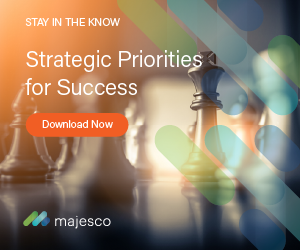The plaintiff bar’s unprecedented investment in AI presents a real and present danger to the insurance litigation defense industry. It is a danger that is only now starting to show on the radar screens of chief claim and litigation officers. This article explores why it is such a threat and why the first response must be, at a minimum, awareness.
The P&C insurance industry runs the largest negotiation network in the world. Annually, 30,000-plus claims professionals assign out over a million litigated claims to 30,000-plus defense attorneys with one goal in mind – negotiating a good outcome. A full 98% of those cases will settle.
In negotiation, success boils down to two critical factors: (1) having better data than your opponent and (2) being able to use that data to negotiate more effectively. Data is critical to eliminating uncertainty, quantifying risk and predicting value. And those who have data to use in their negotiations do better than those that don’t.
Let’s start with a real-world example of how the plaintiff bar is leveraging technology to do this. EvenUp Law is a company that has raised $65 million and has a valuation of more than $325 million. They are helping personal injury attorneys leapfrog P&C in two areas:
- GenAI demand packages. They use AI to craft demand packages for personal injury attorneys, including facts, damages, liability estimates and detailed special damage analyses. They use AI to tell stories to maximize general damages. The plaintiff bar has always “sold” their demands better than we “sell” our offers, and now they are doing that on steroids. EvenUp asserts that they drive up the value of claims by 30%.
- Tech-enabled data sharing. EvenUp has started a contributory database for the plaintiff bar. The plaintiff bar has always been better at sharing data than the defense. We have been talking about a contributory litigation database for 20 years but have yet to actually do it.
That’s just the start. AI is being used by the plaintiff bar to pick the best cases and pick the best venues, right down to quantifying the impact of facing off against specific insurance companies. Investors see the opportunity in this, and money follows opportunity. A January 2024 Bloomberg Law article highlighted how AI will enable litigation funders to invest with greater precision and effectiveness, especially in smaller cases – a segment litigation funders have typically avoided. Insurance companies will see more cases funded by third parties, not fewer.
See also: AI and the Future of Independent Agents
Social inflation, nuclear verdicts and legal system abuse have been three tenets of our industry conversation for years now. If you believe those trends present existential risk to our industry now, just wait until AI takes hold. The plaintiff bar is poised to adopt AI much faster than the defense given their advantages in a few key areas:
- Data accessibility. Plaintiff firms value their data and store it one accessible spot. On the defense side, it tends to sit in highly disparate data sets. There is a disconnect, a gap, and inconsistency between data at the defense firm and data in the claims department. Critical components of the data remain unstructured and unusable. Names of attorneys and law firms are spelled differently, and key data is not reliably recorded in the claim system, which frequently fails to capture offers and demands and sometimes even settlement amounts.
- Economic incentives. Plaintiff attorney economics strongly encourage AI adoption. Their very compensation is driven by maximizing outcomes while minimizing expenditures through less work. The benefit that AI offers is completely synergistic with their desire for efficiencies. Generative AI is not a threat to them, it is a massive opportunity!
- Minimal IT barriers. If a partner at a personal injury firm wants to use AI, then that means it is going to happen. They don’t face extensive IT and compliance approvals, politics or backlogs. If something improves performance, they can just do it.
- Sharing mentality. The plaintiff bar loves to share. They hold an abundance mentality and don’t let competitive concerns get in the way. Chief claim and litigation officers want to share, but they have to convince layers of legal and IT teams that data sharing is good and necessary, which has proven an insurmountable hurdle for the last 20 years. Personal injury law firms don’t have that hurdle.
At its core, AI is about either creating data where there is none or creating insights into data in ways just not humanly possible. Or both. But the real power of these insights is in how they can be used to negotiate better outcomes. And while the plaintiff bar charges ahead, claim professionals and defense attorneys are left to negotiate as all humans do in the absence of data -- they engage in reactionary bargaining and anecdotal predictions and rely on their maturity, seasoning and experience to guide them.
There is nothing wrong with that – negotiation is half-art, half-science. But we’re not going to win by ignoring the science part, and we operate in an industry where both claim department and defense firms are finding it difficult to find and keep experienced people. The plaintiff bar is rapidly becoming systematic in their approach, and we badly need to catch up.
See also: Balancing AI and the Future of Insurance
How will we respond to this threat? What might that response look like? Let’s explore three use-case scenarios for AI in the defense industry. Each is designed to support better negotiations and to put tools and actionable data in the hands of the claim professionals and defense attorneys who desperately need those things.
- Better analyze risk. AI can help us quantify the economic risk of facing a specific plaintiff attorney or being in a specific venue. It can identify which attorneys take cases to trial and which do not. It can identify the verdicts they have obtained. I am a better negotiation decision-maker and strategist when I know this.
- “Sell” our offers. Second, in the same way EvenUp Law prepares demand packages for personal injury attorneys, AI can assemble facts and negotiation points for claims professionals and defense attorneys. Defense teams benefit from “selling” their offer amounts with evidence and with conviction, just like plaintiff attorneys “sell” their demand packages. I am a better negotiator when I do this.
- Negotiate with strength. The winner of the negotiation is usually the one who has attained a superior position of information. Predicting your opposing party’s walk-away number is the key piece of information to attaining an optimal resolution. Your opposing party will happily take $1 more than their walk-away number, or $250,000 more. Imagine the use of AI in a tool that helps claim professionals and defense attorneys zero in on that walk-away number, establish bargaining zones and predict the impact of anticipated legal activities (costs) against that bargaining zone. Keeping the business economics of every litigated claim squarely top-page and top-of-mind makes me a better negotiator. Additionally, AI will be better than we are at predicting and quantifying nuclear verdict risk. Ultimately, it will help in guiding and advising defense teams on offer cadence, anchoring effects, legal spend efficiency and overall negotiation strategy.
For most commercial carriers, the negotiated amounts written on the settlement checks represent the largest expense for the company. Contrast that with the fact that less than 10% of defense attorneys who perform the actual settlement negotiations report any formal training in negotiation science. Then factor in the plaintiff bar blazing past the defense in their use of AI tech – heavily focused on gaining negotiation advantages.
When it comes to litigated claims, the P&C Industry has focused nearly all technology on managing legal expenses, which only make up about 20% of total loss cost. It is time for P&C to get just as serious about indemnity as the personal injury attorneys who make their living from it, which means it is time to get serious about AI tech and data.
And it needs to happen fast – we have never been faced with technology that is moving as fast as it is today.






















